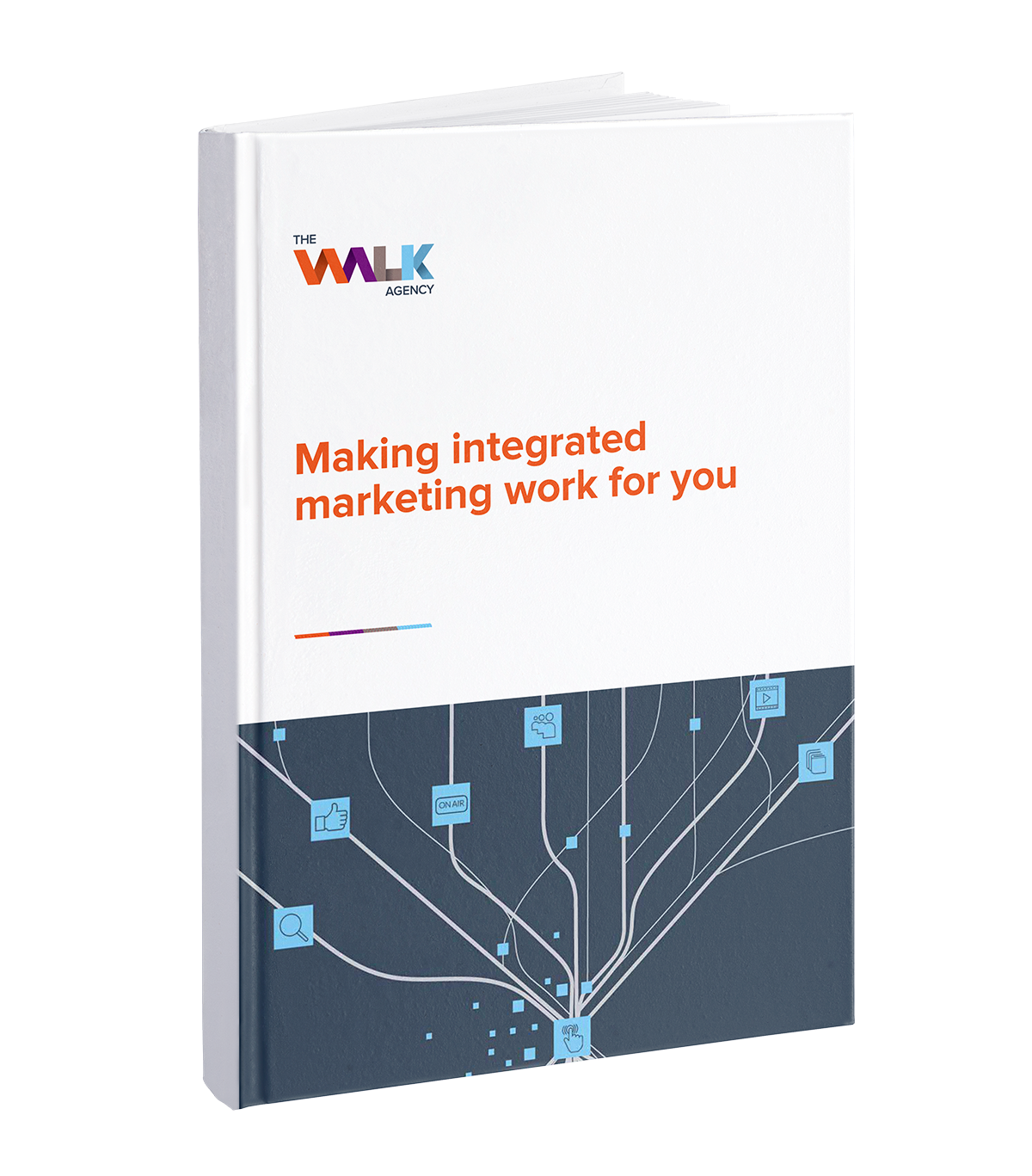The world is reeling from the outbreak of the new Coronavirus, and the highly infectious COVID-19 that it causes. For some, this is a new and unwelcome reality, unrecognisable from the ordinary lives they were leading just a few weeks ago. Naturally, the business impacts have been stark, with industries such as travel, events and catering on the brink of collapse and many others bracing for the effects of a physically isolated community. Many will have to think on their feet and pivot to survive, and despite the natural doom and gloom, there are opportunities out there for brands that are adaptable.
Social distancing and population lockdown mean an increasing number of sales will move from the physical retail to the online marketplace. Deals traditionally completed with a handshake will now be screen-to-screen. Companies that communicate successfully to home-based consumers will win. How has your business reacted? Look closely and you’ll find this could be an opportunity to do things better than before.
Internal communications challenges
Reacting to such unprecedented events will take leadership. It will be important to build a great team focused on realigning your business communications efforts. Make sure different departments and areas of responsibility are represented, so the business can communicate with the outside world with one voice.
Consider the specific challenges your business needs to overcome. Retaining customer relationships will be paramount. Brands with historically effective online communications before the pandemic may have an advantage, with bricks and mortar brands having their work cut out. But your challenge may be something different entirely. It’s time well spent to go through a problem definition phase, to establish what will make the most difference to your business to solve.
Prepare a communication plan
Consistent information about the products and services offered will be crucial, along with having a meaningful (but respectful) volume of communication with customers. Misinformation and confusion will set your brand back with consumers, and if there are changes to your business or what you can offer in this time, you need to communicate all changes to your clients and customers ASAP. Use whatever channels you can to connect with your audience, and let people know what to expect from you. While you’re producing special communications, remember to update the “always on” channels, like updating operating hours and descriptions on your Google My Business profile. The description update should include how interaction with your business may change, for example if there’s an alternative way to buy other than visiting your premises, or steps you’re taking to ensure your customers’ safety.
Identify and identify with your audience
Consider how your audience and their likelihood to engage with your business might have changed. Here are a few noteworthy questions:
- Is your product or service still relevant to the same people?
- Is your product or service now relevant to new people?
- How has your audience’s needs changed?
- Do they have a tighter budget?
- Do they need your help, or assurances? (If they have a contract or agreement with you.)
- How have the channels you engage with them changed?
- What type of messages will resonate now?
Answers to these questions will help you craft the right message for an audience that has most likely changed as a result of the crisis. If you can, do a round of polls, a survey or some other customer research to put some data behind your assumptions.
Listen to your audience
Trying to predict the effects of a pandemic on your customer needs is going to be tricky as lives and priorities change, and it might be more constructive to concentrate efforts on being responsive. So, listen to what customers are saying they need, rather than what you think they need. This is a great example of something that’s best marketing practice in the ordinary way, but it’s absolutely crucial right now.
Use tracking software to closely monitor marketing campaign performance and keep an open mind. We are in a time of change where nothing is certain. Your communication strategy must be fluid, so it has the freedom to evolve as required.
Change is stressful, so marketing communications must be honest, but designed to help calm and reassure. This can be accomplished with clear, specific and timely messaging that leaves little room for interpretation. Clients and customers should be told exactly what’s going on, ideally ahead of time, if that’s going to help them make the right buying decision.

Adapt and find the opportunities
Being quick to respond to changes in the way people live and work could be the deciding factor between businesses that succeed and those that struggle in the coming months. The essence of what marketing is and the results it must achieve have not changed – it’s still about clearly communicating a solution to a problem or a customer need – but the most effective channels and messages could well be different from one month to the next.
The travel industry for the near future is grinding to a halt, but it’s not all bad news. Keywords such as “cheap flights right now” received a 90% increase during the last month. Travellers are interested in cheap flights towards the end of the year when they expect the lockdowns to be lifted. Smart travel companies will focus on flights to low-risk countries. Also, incentives such as favourable cancellation policies with a full refund will boost sales. It’s an example of being responsive to what customers are looking for and making it work.
On the other side of that coin, Amazon has seen an increase in sales as more people are buying online and they are looking to add 100,000 warehouse staff in response. It’s a clear indicator that offline sales are moving online, which is a reason to be optimistic.
Reframe, reinvent, innovate
It’s pretty easy to conclude that some traditional marketing practices might have a drastic decrease in effectiveness, but that’s not to say that you can’t get great results by developing new ones.
For example, Tom O’Regan from Madison Logic, and account-based marketing platform with a focus on B2B, suggests that conference-based marketing used to be their second biggest income stream. That expenditure may now be swapped for innovative virtual events, where the demand will explode to fill the gap left behind by the death of real-world conferences. Being the first to pivot based on a shift in client demand could make you a market leader.
If you’re used to doing in-person selling for big deals, you’ll need to innovate on your digital meeting experiences. Maybe webinars will give you the opportunity to market complicated products where other forms of marketing can’t compete. It’s a suitable alternative to hosting presentations for a crowd of people, and people can still ask questions via webinar chat, which means they can still feel engagement. Attendee emails could also be captured, which gives you a great channel for follow up communication. Add a touch of personalisation to those nurture campaigns, enhance your automation experience, and you might actually find yourself with a flood of new customers if your competitors aren’t as on the ball as you.

Digital experiences must be richer
Expect the online marketing landscape to be more competitive as companies turn towards the virtual world to find their customer base. Your digital experiences may have to evolve to cut through the other noise. Did you rely on your physical store locations to do most of the selling? Consider what customers loved about your locations and recreate the same feeling online.
How about creating a virtual world that customers can explore? Maybe this is the time for virtual reality VR) and augmented reality (AR) to receive the boost they’ve been waiting for to go mainstream?
Rebalance your short-term and long-term efforts
Brand relevance will come into question in the coming months. This means you may have to prioritise activities that incentivise people to take action now, above playing the long game. Aside from the obvious cash flow questions, securing immediate sales will help your business stay in the minds of consumers as one that is still part of their lives.
There are a myriad of conversion and quick sale tactics to employ online that can help here, but the most important challenge will be to remain visible as your customers’ focus shifts.
Pressure can make diamonds
Marketing spending may well take a hit, as companies are unsure of where to prioritise their resources to stay financially viable. However, businesses will soon realise that marketing is more important now than ever before. Running low on cash is one issue, but to become invisible or irrelevant to your customers could be an even more damaging blow. The important thing for marketers will be to help their clients innovate, manage their spends effectively, focus on results and deliver quality work that makes the most of resources.
“
Encourage innovation.
Change is our lifeblood,
stagnation our death knell.
”
David Ogily
These are tricky times, but you won’t have to look far to see a business who is more affected than you. The pandemic may force marketers to go back to the drawing board on channels and engagement strategies, but that’s not necessarily a bad thing. Be responsive, flexible and not afraid to experiment, and you’ll find yourself with a licence to innovate and succeed.
If this challenge doesn’t get your blood pumping, nothing will.





